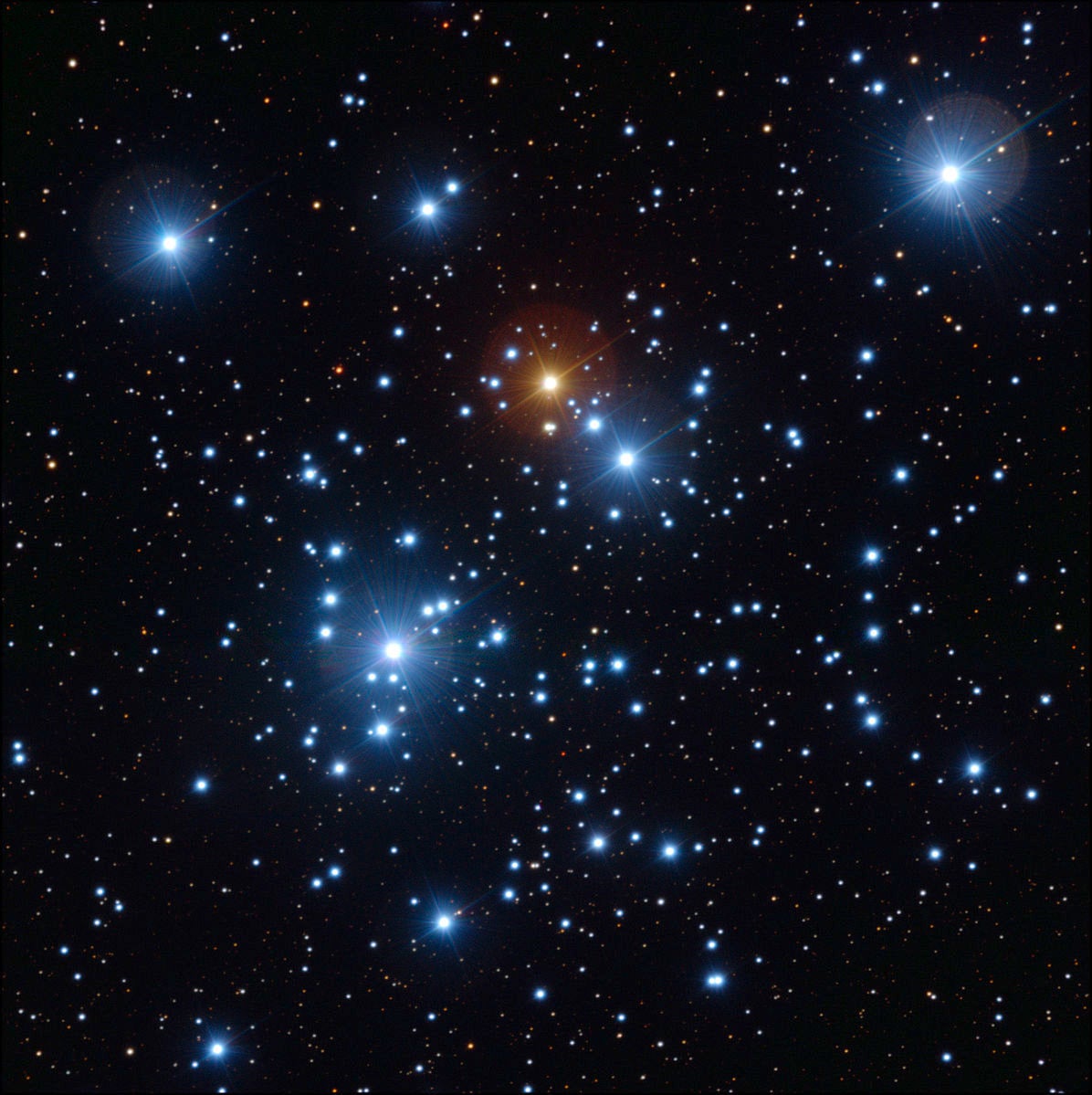
One of the gems of the night, the Jewel Box Cluster (NGC 4755) appears to dangle from the eastern arm of the Southern Cross like a pearl earring. Early explorers first saw it as a 4th-magnitude star, leading Johann Bayer to label it in his 1603 Uranometria catalog as Kappa (κ) Crucis. Its identity remained singular until Abbé Nicolas Louis de Lacaille used a ½-inch telescope to resolve it into half a dozen stars during his 1751–1753 exploration of the southern skies from the Cape of Good Hope. Its “Jewel Box” moniker derives from a description by John Herschel who called it a “casket of variously coloured precious stones.”
Today all one needs is a binoculars or a small telescope to see the cluster’s sapphire and ruby gems set against the black marble of dust in the Coalsack Nebula. This intervening dust makes the cluster’s distance difficult to determine, while a mysterious mix of youthful blue stars and aged red supergiants makes its evolutionary age uncertain. Conservative estimates, however, place the cluster some 6,400 light-years distant, with an age somewhere between 7 million and 16 million years.
Most backyard telescopes will reveal only a fraction of its 100-plus brightest members, which are crammed into an area only 10′ across. Through a telescope, the cluster appears to have two groups: one bright, one faint. Is the Jewel Box a melding of two star clusters or a visual line-of-sight oddity?









